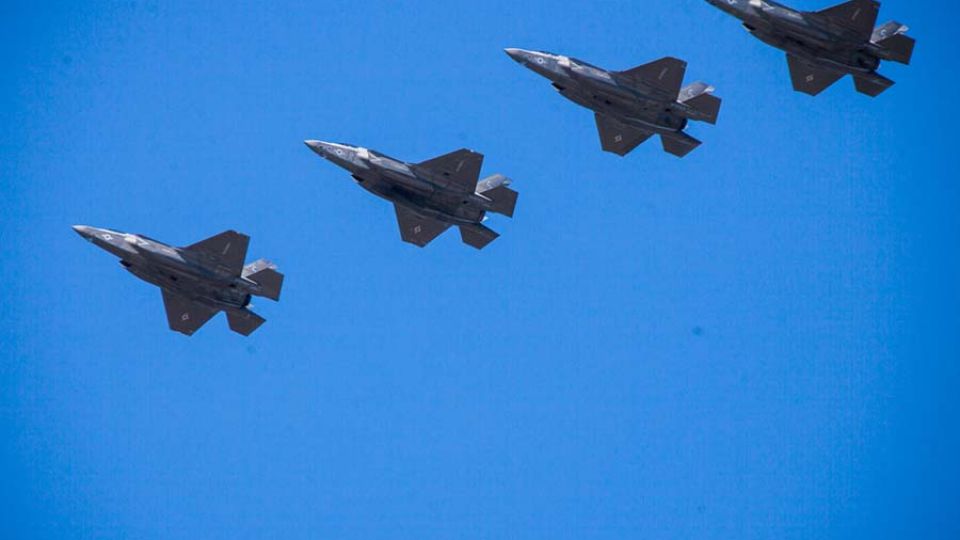October 19, 2022
SEOUL – South Korea and the United States will publicly stage large-scale aerial drills, involving their F-35 stealth fighters, to enhance combat readiness and train for wartime contingencies amid mounting threats from North Korea. Unlike previous years when the allies sought to keep a low profile, the publicized air combat exercise would be an apparent warning message to North Korea.
The South Korean and US air forces are set to conduct their combat readiness training exercise from Oct. 31 to Nov. 4 in the South Korean airspace, the South Korean military confirmed on Tuesday.
“The exercise, which has been conducted annually since 2015, aims to verify systems to conduct combined air operations of the South Korean and US air forces in wartime as well as improve combat readiness and capabilities,” South Korea’s Air Force said.
Seoul and Washington will mobilize a total of 240 combat aircraft, according to South Korean military sources.
The South Korean Air Force plans to dispatch 140 aircraft such as F-35A stealth fighters and F-15K and KF-16 fighter jets.
The US Air Force will deploy around 100 aircraft, including F-35B stealth fighters and F-16 Fighting Falcons, on the Korean Peninsula for the upcoming combined aerial drills.
F-35B fifth-generation, multirole combat aircraft — which have short takeoff and vertical landing capabilities — are based at Marine Corps Air Station Iwakuni, in Japan.
South Korea’s F-35A stealth fighters and the US’ F-35B stealth fighters will team up for the first time.
The South Korean and US air forces will practice detecting North Korean targets and infiltrating enemies during the training exercise that will present real-world scenarios. The two forces will also aim to master executing the pre-positioned air tasking order, or ATO, devised by the US.
The ATO provides detailed tasking for a specific execution time frame, normally 24 hours, and articulates how to fly, fight and win during joint air operations. The US-written pre-positioned ATO contains the breakdown of the mission of each South Korean and US combat aircraft in wartime.
Publicize aerial drills
The four-day combined air combat exercise will be staged during the period when North Korea is believed to have a relatively strong chance of conducting a seventh nuclear test.
The South Korean spy agency said in September that North Korea could conduct a nuclear test after China’s one-week party congress that ends Oct. 22 but before the US midterm elections on Nov. 17.
North Korea has continued to launch missiles in violation of the 2018 inter-Korean military tension reduction deal.
North Korea has fired 13 ballistic missiles and two cruise missiles in nine discrete launches in 20 days from Sep. 25 to Oct. 14. North Korean state media later claimed that the launched ballistic and cruise missiles can carry tactical nuclear weapons.
Around 560 artillery shells were fired on Oct. 14 from inter-Korean border areas into maritime buffer zones which the two Koreas agreed on under the Sept. 19 Comprehensive Military Agreement.
The South Korea-US large-scale aerial exercise will be publicly conducted for the first time since December 2017 amid simmering tensions. The exercise, previously dubbed “Vigilant ACE” from 2015 and 2017, had been scaled down or deliberately conducted low-key, in the wake of the first US-North Korea summit in June 2018.
The South Korean and US air forces mobilized around 230 warplanes for the Vigilant ACE exercise in December 2017, months after North Korea conducted a sixth nuclear test and launched an intercontinental ballistic missile respectively in September and November. At that time, a B-1B Lancer supersonic bomber, F-22 Raptor stealth fighters, and F-35 stealth combat aircraft, among others, were deployed on the peninsula.
Allies take action
The revival of the large-scale air combat exercise is in line with the commitment by South Korean President Yoon Suk-yeol and US President Joe Biden to further strengthen deterrence by reinforcing combined defense posture.
During the May 21 summit, Yoon and Biden also agreed to “initiate discussions to expand the scope and scale of combined military exercises and training on and around the Korean Peninsula,” citing the “evolving threat” posed by North Korea as the reason. The South Korean and US militaries have taken follow-up measures.
As part of their efforts, F-35 stealth fighters from the South Korean and the US air forces teamed up for the first time for four days of combined aerial drills in July. But around 30 combat aircraft were mobilized for the air combat exercise.
US dismisses claims
Meanwhile, US Secretary of State Antony Blinken on Monday assessed that North Korea’s recent saber-rattling would be its response against the joint move by the US, South Korea, and Japan to enhance their deterrence and readiness against “any kind of North Korean aggression.” Blinken cited the US efforts to bring back large-scale exercises both with South Korea and Japan after years of suspension as one of the examples.
“I think that Kim Jong-un saw that and didn’t like it, and it’s a response to that,” Blinken said during a discussion with former Secretary of State Condoleezza Rice in Stanford, California.
The US State Department also dismissed attempts by North Korea, China and Russia to justify North Korea’s ballistic missile launches and other military actions as countermeasures to defense-oriented military exercises between the US and its allies as nonsense.
“When there was a UN Security Council hearing on this, you saw the PRC and Russia and other countries parrot this false claim that US provocations were the origination of these ballistic missile launches or anything like that,” Vedant Patel, the State Department’s principal deputy spokesperson, told a press briefing on Monday.
“That’s baloney and absolutely not the case.”


